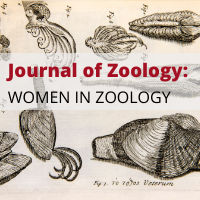
Zoology is the scientific study of animals and their habitats. It covers a wide range of topics, from anatomy and physiology to behavior and ecology. Zoological full-text articles explore the mysteries that still remain in the animal kingdom, such as the current state of biodiversity. They also describe cutting-edge advances in our understanding of biology, evolution, and ecology.
What Does Zoology Entail?
Simply put, zoology is the science of studying animals. It encompasses the biological aspects of animals, such as anatomy and physiology, as well as the behavioral and social aspects, such as communication, mating rituals, and population dynamics. Zoology also looks at the relationship between animals and their environment, or how animals interact with their habitat to support their survival.

The field of zoology contains subfields such as ethology, which focuses on animal behavior; herpetology, which studies reptiles and amphibians; ornithology, which studies birds; mammalogy, which studies mammals; and so on. All these subfields are united by their investigation of animals and their habitats.
Uncovering Current Trends in Biodiversity
An important contribution of zoology research is the exploration of current trends in biodiversity. Biodiversity refers to the variety of living species on Earth. It includes both species composition (the types of species present in an area) and species abundance (the number of individuals in each species). It’s important to monitor changes in biodiversity over time, because it affects humans in many ways, including economic and environmental health.
Zoological full-text articles strive to uncover changes in biodiversity, so that we can take action to conserve animal species and their habitats. They look at the effects of climate change, human activities, and other natural processes, such as natural disasters. Such knowledge can then be used to develop conservation strategies and new laws for protecting endangered and threatened species.
New Advances in Animal Science
In addition to tracking current trends in biodiversity, zoologists also use cutting-edge technologies to study animals. These include GPS tracking tags and drones, which can help researchers observe and identify animals in their habitats. Zoologists also employ biotelemetry devices to measure the vital signs of animals, such as heart rate. By doing this, researchers can gain a better understanding of how animals live and interact with their environment.
Advances in genetics also offer unparalleled insight into understanding the evolutionary history of animals. For instance, analyzing DNA sequences can shed light on how animals evolved and adapted to their environments. Genetic techniques also allow zoologists to better comprehend how disease is transmitted within and across species.
Experimental Approaches in Zoology
Experimental approaches play a major role in zoology. By conducting experiments, zoologists can test hypotheses and make predictions about how animals will behave in certain conditions. Experiments also provide evidence for theories about animal behavior and ecological processes. Commonly used experimental techniques include field observations, laboratory experiments, surveys, and tests.
In recent years, there has been an increased focus on using ethical methods in experimental zoology. This involves identifying potential harms to animals and seeking out ways to reduce them. Researchers also strive to reduce the impact of their experiments on the environment and consider ways to minimize the disruption to ecosystems.
Studying Animals Through Zoology
Ultimately, zoology is all about unlocking the secrets of animals and understanding the complexities of their lives. It draws on a variety of disciplines to explain the behavior and ecology of animals, and to investigate current trends in biodiversity. Through the use of experimental approaches, zoology strives to advance our knowledge of the animal kingdom and create meaningful conservation strategies to protect our ever-shrinking wildlife.
